Applied Physics
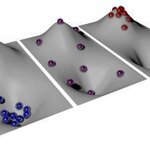
On the Kelvin Scale, the absolute temperature used by physicists, it is not possible to get colder than zero degrees kelvin. The physical meaning of the temperature of a gas is determined by chaos, the disordered movement of its particles. The colder the gas, the slower the particles and at zero kelvin (-459.67 F, -273 C) the particles stop moving and all disorder disappears. That is why it is called absolute zero.
But physicists at the Ludwig-Maximilians University Munich and the Max Planck Institute of Quantum Optics in Garching have created an atomic gas that has negative…
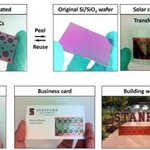
Solar panels are easily susceptible to mechanical problems. Storms, leaves, you name it - but some of that is because they are rigid. That rigidity also limits their applications.
New flexible, decal-like solar panels that can be peeled off like band-aids and stuck to virtually any surface, from papers to window panes, could make solar power a lot more deployable. The world's first peel-and-stick thin-film solar cells have been created by researchers at Stanford University and unlike standard thin-film solar cells, their peel-and-stick version does not require any direct…
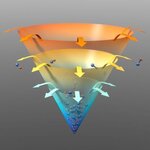
Evaporative cooling has been used to cool atoms to extraordinarily low temperatures. The process was used in 1995 to create a new state of matter, the Bose-Einstein condensate (BEC) of rubidium atoms (see Nobel laureate Carl Wieman and his Science 2.0 articles here), which was so revolutionary and unnatural that BEC atoms travel at a rate of only three feet per hour. Now in its 50th year, Joint Institute for Laboratory Astrophysics (JILA) physicists have met a goal once bordering on the impossible - they have chilled a gas of molecules to very low temperatures by adapting the…

By using voltage instead of current, researchers say they have made major improvements to magnetoresistive random access memory - MRAM - a faster, higher-capacity class of computer memory.
Current, magnetic memory is based on spin-transfer torque (STT), which uses the magnetic property of electrons - spin - in addition to their charge. STT utilizes an electric current to move electrons to write data into the memory.
STT is superior in many ways to other memory technologies but its electric current–based write mechanism still requires a lot of power and that generates heat when…
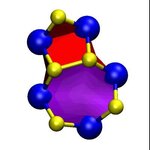
A new hypothetical material offers the tantalizing possibility of a signal path smaller than the nanowires for advanced electronics.
Yes, theoretical materials. It must be the weekend.
Rice University theoretical physicist Boris Yakobson and postdoctoral fellow Xiaolong Zou were investigating the atomic-scale properties of two-dimensional materials - we all have those laying around the house to build Christmas gifts - when they concluded that a particular formation, a grain boundary in metal disulfides, will create a metallic, and therefore conducting, path only a fraction of a nanometer wide…

Physicists have found elusive Dirac electrons in a superconducting material called copper-doped bismuth selenide - and say it could serve as the silicon of the quantum era.
Quantum computers use atoms to perform processing and memory tasks and for a generation have been promising dramatic increases in computing power because of their ability to carry out scores of calculations at once.
Superconductors can, at cold enough temperatures, conduct electricity indefinitely from one kickstart of energy because they have no electrical resistance. Dirac electrons, named after the…

Tornado-like vortexes can be produced in bizarre fluids which are controlled by quantum mechanics, completely unlike normal liquids.
There massed ranks of quantum twisters even line up in rows on a semiconductor chip. By controlling where electrons move and how they interact with light the team created a marriage of electrons and photons that form a new quantum particle called a 'polariton'.
The results come from a collaboration between the experimental team in the NanoPhotonics Centre at Cambridge, led by Professor Jeremy Baumberg, and the theoretical quantum fluids group of Natalia…

A new class of materials has shown to be able to form dynamic, moving structures.
Researchers have demonstrated tiny spheres that synchronize their movements as they self-assemble into a spinning microtube. The researchers used tiny particles called Janus spheres, named after the Roman god with two faces, which have been previously demonstrated for self-assembly of static structures. In this study, one half of each sphere is coated with a magnetic metal. When dispersed in solution and exposed to a rotating magnetic field, each sphere spins in a gyroscopic motion. They spin at the same…

A new approach to invisibility cloaking goes beyond transformation optics and those tiresome Harry Potter analogies. It is instead for us at sea to shield floating objects, like oil rigs and ships, from rough waves and is based on the influence of the ocean floor's topography on the various "layers" of ocean water.
Reza Alam, assistant professor of mechanical engineering at the University of California, Berkeley, will describe at the American Physical Society's (APS) Division of Fluid Dynamics (DFD) meeting how the variation of density in ocean water can be used to cloak floating objects…
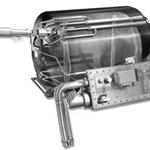
Hydrogen is the smallest molecule in the Universe, which makes keeping it in one place difficult. To tap its tremendous potential as a fuel, spacecraft must be able to store liquid hydrogen at extremely low temperatures and then feed it smoothly to rocket engines.
When ESA was developing its hydrogen-fueled Ariane rockets, they got Austria’s MagnaSteyr to build tightly sealed fuel lines and double-walled storage tanks capable of trapping and holding liquid hydrogen and oxygen. Now MagnaSteyr has adapted the technology developed for Ariane to build clean-burning cars that can use…